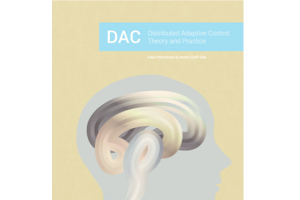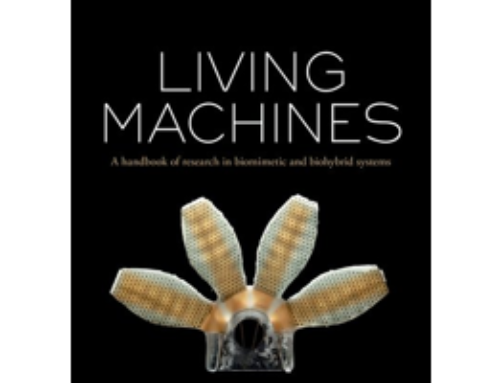Distributed Adaptive Control: Theory and Practice
Editors: Paul Verschure & Armin Duff
Abstract:
In particular, this review focuses on the systems involved in realising the core principles underlying the reactive layer: the allostatic control of fundamental behaviour systems in the vertebrate brain and the emergent non-linearity through neuronal mass action in the locust brain. The adaptive layer is analysed in terms of the classical conditioning paradigm and its neuronal substrate the amygdala- cerebellum-neocortex complex together with episodic memory and the formation of sense-act couplets in the hippocampus. For the contextual layer, the ability of circuits in the prefrontal cortex to acquire and express contextual plans for action is described. The general overview of DAC’s explanation of MBBN is combined with examples of application scenarios in which DAC has been validated, including mobile and humanoid robots, neurorehabilitation and the large-scale interactive space Ada. After 20 years of research DAC can be considered a mature theory of MBBN.
Download book here: Distributed Adaptive Control: Theory and Practice.

Citation:
Distributed Adaptive Control: Theory and Practice. Biologically Inspired Cognitive Architectures (Vol. 1). Verschure, P. F. M. J., & Duff, A. Eds. (2013).
This book was sponsored by:
Book Sprints for ICT Research, Support Action project is funded by the European Commission under the FP7-ICT Work Programme 2013. ID: 323988. http://booksprints-for-ict-research.eu 1 | Preface 6 7
CSNII – Convergent Science Network for Neurotechnology and Biomimetic systems, funded by the European Commission under the FP7-ICT Work Programme 2013. ID: 601167
The Book Sprint was facilitated by
Barbara Rühling of BookSprints.net. Layout and Design:
Henrik van Leeuwen Proofreader: Rachel Somers Miles
Anna Mura and Sytse Wierenga : Original cover
Authors: Paul Verschure, Armin Duff, Encarni Marcos, Riccardo Zucca, Ivan Herreros, Stephane Lalle’, Anna Mura and Tony Prescott.




